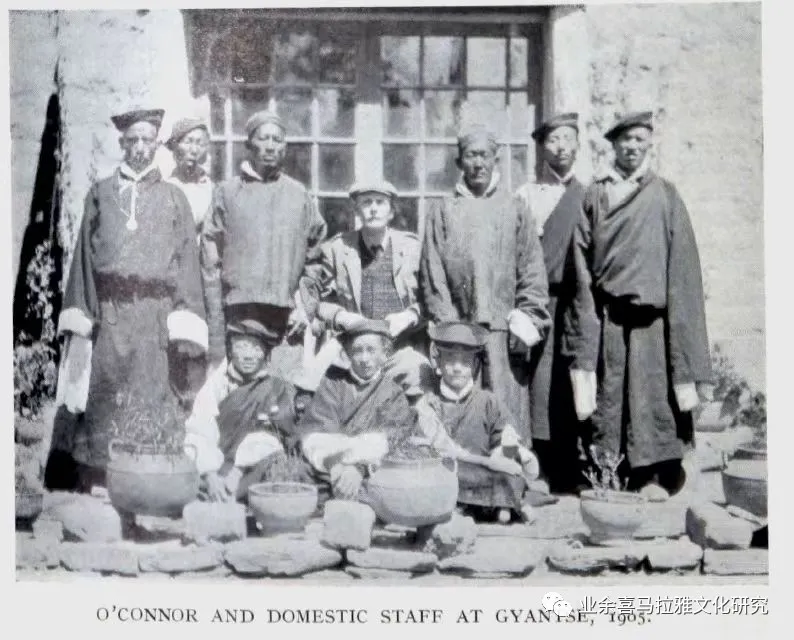Welcome to a fascinating piece of history—the British Trade Agency in Gyantse, Tibet. Established through the landmark “Lhasa Convention” treaty of 1904 between Britain and Tibet, this agency marked a pivotal moment in the historical interactions between the two regions. Let’s dive into what made the Gyantse Trade Agency so unique and its significant role in Tibet.
A Brief Overview
In the heart of Tibet, the British Trade Agency stood as a beacon of commercial and cultural exchange. Born from the 1904 Lhasa Convention, this agency wasn’t just about trade. It was a symbol of Britain’s presence in Tibet, offering British merchants’ freedom from taxation and privileges that paved the way for an enhanced trade relationship.

Cultural Connection and Strategic Importance
Gyantse quickly became more than a commercial hub; it was a cultural bridge. The agency was known for organizing vibrant dances, showcasing the rich cultural tapestry of the region. Yet, Britain’s ambitions didn’t stop at Gyantse. Despite not securing a permanent commissioner in Lhasa following their second invasion, the British envisioned Gyantse as a crucial link to Lhasa and beyond, connecting to major cities like Yatung and Darjeeling in India.
The Founding of the Agency
The agency’s establishment was green lit by Broderick, the British Secretary of State for India, in July 1904. This move followed the directives of the Lhasa Convention, which not only named Gyantse but also Garthok and others as key trading ports. This development was crucial, mirroring the earlier privileges seen in Yatung through the 1893 treaty.
Challenges and Developments
Despite its promising start, the agency faced its share of challenges. In 1907, the Qing dynasty’s appointment of Gao Enhong to oversee trade in Gyantse hit a snag. Accusations flew, claiming Gao hindered direct communications between British nationals and Tibetan officials, leading to his dismissal.
The subsequent years saw the British solidifying their presence, with the 1908 Sino-British treaty allowing British troops at the agency and enhancing communications and transport facilities. By 1909, a tax inspection commission further established British administrative arrangements in the region.
A Legacy Cemented
By 1915, the establishment of the Chief Commercial Officer’s office in Gyantse by the Tibetan government marked a significant institutionalization of British influence in the area. The trade agency’s legacy is a testament to the complex layers of history, diplomacy, and cultural exchange that define the British presence in Tibet.
A Lasting Impact
The British Trade Agency in Gyantse remains a fascinating chapter in the history of British-Tibetan relations. Its establishment and operations provide valuable insights into the strategic and cultural dynamics of the time. As we explore the past, the agency stands as a reminder of the intricate dance between commerce, politics, and culture in shaping history.
| Date | Name |
|---|---|
| Oct 1, 1904 | Ekai Kawaguchi (Returned with British forces from Lhasa, became the first agent) |
| Dec 23, 1905 | Frederick Marshman Bailey |
| Dec 15, 1906 | Ekai Kawaguchi |
| July 1907 | Frederick Marshman Bailey |
| July 1907 | Ekai Kawaguchi |
| Aug 1, 1907 | Frederick Marshman Bailey |
| June 5, 1909 | Kennedy |
| Dec 13, 1909 | James Leslie Ross Weir |
| Apr 1, 1911 | James Leslie Ross Weir |
| Aug 10, 1911 | David Macdonald |
| Dec 30, 1911 | James Leslie Ross Weir |
| Feb 15, 1912 | David Macdonald |
| May 4, 1912 | Basil Gould |
| Mar 31, 1913 | David Macdonald |
| Feb 24, 1916 | Campbell |
| Mar 31, 1918 | David Macdonald |
| June 20, 1924 | Frederick Williamson |
| May 31, 1926 | Wass |
| Jan 3, 1927 | Hopkins |
| Apr 3, 1928 | Kanak |
| Mar 1, 1929 | Nieu |
| May 18, 1929 | Kanak |
| Sep 18, 1929 | Smith |
| Nov 19, 1929 | F. M. Bailey (Frederick Marshman Bailey, likely a recurrence or error) |
| Nov 19, 1931 | Russ |
| Apr 1, 1933 | Wors |
| Nov 1, 1933 | Hurley |
| June 20, 1935 | White |
| July 30, 1936 | Reginald Fox |
| Feb 3, 1940 | Sampson |
| July 20, 1940 | Sinclair |
| Jan 15, 1943 | Seek |
| Sep 28, 1943 | Basil Gould |
| May 19, 1944 | Mainprice |
| Aug 12, 1944 | Basil Gould |
| Feb 12, 1946 | Reginald Fox |




















